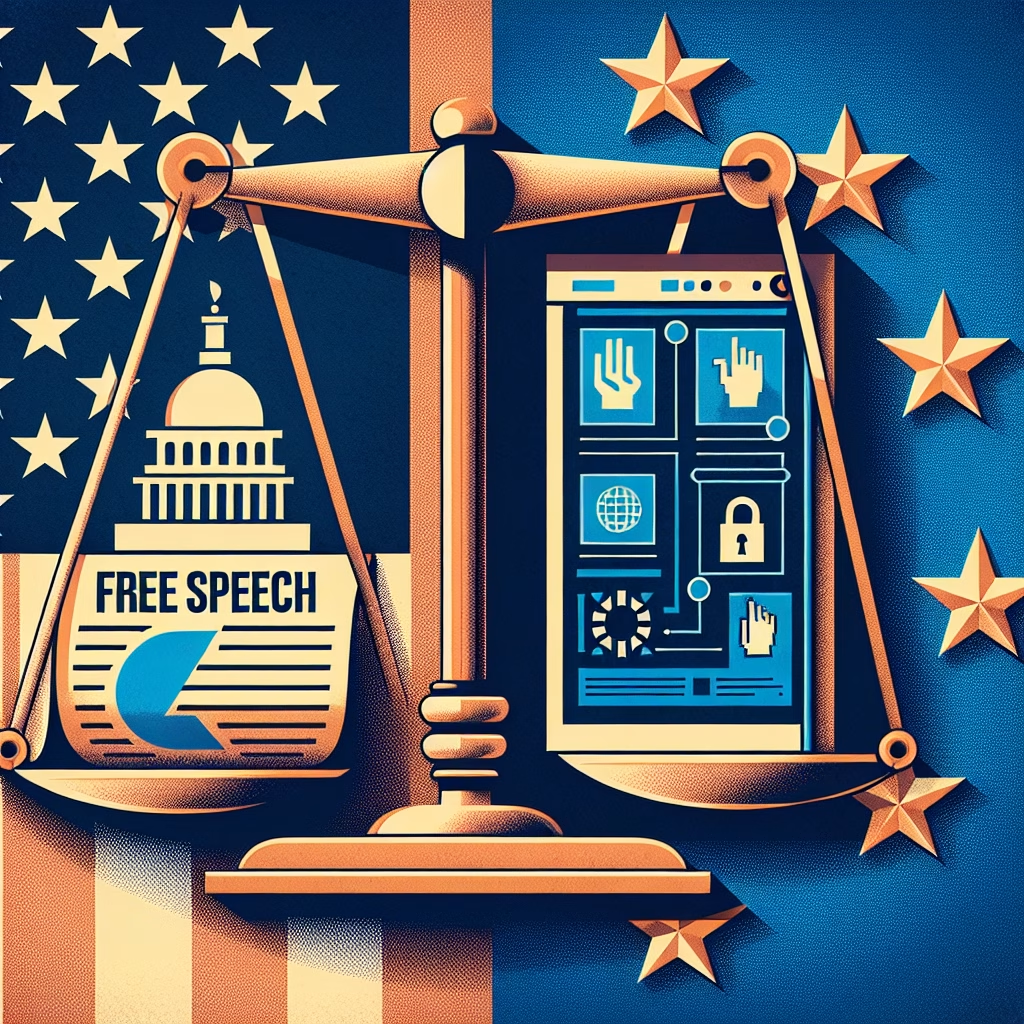Summary:
The clash between US Free Speech protections and the EU’s Digital Services Act (DSA) represents a pivotal conflict in global internet governance. The US prioritizes broad speech freedoms under the First Amendment, while the EU’s DSA mandates proactive content moderation to combat illegal material, disinformation, and systemic online risks. This divergence reflects deep-rooted legal traditions: the US emphasizes individual liberty, whereas the EU focuses on collective safety and democratic integrity. Understanding this conflict is critical for businesses, policymakers, and users navigating cross-border digital rights, as it shapes how speech is regulated online and may influence future global internet standards.
What This Means for You:
- Regional Content Variability: Platforms may display different content to US and EU users. Expect stricter takedowns of hate speech or disinformation in Europe, while US-based platforms might host controversial (but legal) speech under First Amendment protections. Adapt your engagement strategies accordingly.
- Compliance Risks for Businesses: Companies operating transatlantically must implement geolocation-based moderation systems. Audit your content policies now to avoid fines (up to 6% of global revenue under the DSA). Consult legal experts specializing in dual compliance frameworks.
- Digital Literacy Empowerment: Users should learn platform reporting tools and jurisdictional rights. In the EU, leverage DSA-mandated transparency reports to challenge unjust removals; in the US, document censorship that exceeds Terms of Service to build legal cases.
- Future Outlook or Warning: Regulatory fragmentation may escalate, forcing platforms to fragment services by region. Smaller companies lacking compliance resources could exit EU markets, reducing competition. Watch for US state laws emulating DSA principles amid federal inaction.
US Free Speech vs EU Digital Services Act:
Legal Foundations in Conflict
The First Amendment’s near-absolute protection for speech (barring narrow exceptions like incitement or obscenity) contrasts with Europe’s proportionality-based approach under the European Convention on Human Rights. The DSA operationalizes this by requiring “trusted flaggers” to report illegal content, algorithmic transparency for “very large online platforms” (VLOPs), and crisis response protocols. This imposes preventive duties anathema to US intermediary liability precedents like Section 230, which shields platforms from liability for user content.
Political Drivers and Enforcement Realities
The DSA emerged from EU concerns about election interference and hate speech proliferating unchecked – issues amplified by rising far-right movements. Meanwhile, US debates focus on perceived “conservative censorship” by Big Tech, prompting lawsuits alleging viewpoint discrimination. Though the DSA avoids mandating removal of “legal but harmful” content (a UK Online Safety Act approach), its risk assessment rules for VLOPs create de facto pressure to over-remove quasi-legal speech like medical misinformation.
Human Rights Tensions
While the DSA aims to protect dignity and safety (aligning with Article 4 EU Charter on inhuman treatment), critics argue it risks chilling legitimate speech through automated filtering. The US model prioritizes Article 19 ICCPR free expression but fails to address algorithmic amplification’s role in radicalization. Neither framework fully balances these rights: the DSA lacks robust appeal mechanisms, while US law leaves marginalized groups vulnerable to targeted harassment.
Compliance Challenges and Market Impacts
Meta spent ~$1 billion on DSA compliance by 2023, restructuring content teams by jurisdiction. Smaller platforms like Telegram face existential compliance costs. Geolocation circumvention via VPNs could become widespread, undermining the DSA’s territoriality principle. Conversely, US-based free speech absolutists risk losing EU market access – Parler’s 2021 App Store removal foreshadowed this trade-off.
Pathways to Coexistence
Potential compromises include “human rights by design” obligations mirroring GDPR’s privacy protocols, allowing culturally tailored moderation while respecting core principles. The UN Guiding Principles on Business and Human Rights offer a template, though enforcement remains contentious. Without bilateral agreements, forum-shopping and regulatory arbitrage will escalate.
People Also Ask About:
- How do US free speech laws differ from EU hate speech regulations?
US law protects hate speech unless it directly incites violence (Brandenburg Test). The EU requires removal of content that advocates violence or hatred against protected groups under frameworks like the Framework Decision on Racism and Xenophobia. The DSA enhances enforcement via standardized notice-and-action mechanisms. - Could the DSA influence US legislation?
Yes. Bills like the Kids Online Safety Act borrow DSA concepts like age verification and risk assessments. However, First Amendment barriers remain high. Sector-specific laws (e.g., regulating AI deepfakes) are more viable than sweeping content rules. - What happens if a US platform ignores the DSA?
The EU can impose fines, ban operations, or mandate app store removals. Non-compliant companies may face secondary sanctions from advertisers or payment processors aligning with DSA standards. - Does the DSA protect whistleblowers or journalists?
Exemptions exist for “media outlets” recognized by member states, but independent journalists lack clear safeguards. Whistleblower protections depend on national laws, creating uneven risks across the EU.
Expert Opinion:
The diverging approaches risk creating a two-tier internet where rights diminish based on location. Excessive EU removals could push users toward less-regulated spaces, increasing exposure to extremism. Conversely, unregulated US platforms undermine child safety and democratic processes. Sustainable solutions require granular, context-aware moderation tools and multilateral standards that reconcile civil liberties with collective security. Users should pressure policymakers for transparency and proportionality in enforcement.
Extra Information:
- EU DSA Official Portal – Key compliance guidelines for businesses and analysts tracking enforcement precedents.
- ACLU Free Speech Resources – Explores US legal challenges to content moderation, including pending Supreme Court cases.
- ARTICLE 19 DSA Analysis – Critical assessment of human rights impacts by a global free expression NGO.
Related Key Terms:
- Content moderation laws US vs EU
- Digital Services Act compliance for US companies
- First Amendment vs EU hate speech regulations
- Cross-platform internet censorship differences
- Online free speech rights in Europe
- Section 230 reform and DSA comparisons
- EU VLOPs (Very Large Online Platforms) requirements
*Featured image provided by Dall-E 3





